How Project Managers Can Say No — While Preserving Relationships
Last updated: June 27, 2025 Read in fullscreen view
- 01 Aug 2024
 The Standish Group report 83.9% of IT projects partially or completely fail 159/1784
The Standish Group report 83.9% of IT projects partially or completely fail 159/1784 - 13 Apr 2024
 Lessons on Teamwork and Leadership from Chinese story book "Journey to the West" 43/952
Lessons on Teamwork and Leadership from Chinese story book "Journey to the West" 43/952 - 13 Oct 2025
 Mastering the Dynamic Squad Model: A Modern Approach to Agile Teams 28/102
Mastering the Dynamic Squad Model: A Modern Approach to Agile Teams 28/102 - 02 Nov 2021
 What is Terms of Reference (ToR)? 24/1469
What is Terms of Reference (ToR)? 24/1469 - 03 Apr 2022
 Microsoft Solutions Framework (MSF) 14/1162
Microsoft Solutions Framework (MSF) 14/1162 - 12 Oct 2022
 14 Common Reasons Software Projects Fail (And How To Avoid Them) 10/505
14 Common Reasons Software Projects Fail (And How To Avoid Them) 10/505 - 18 Dec 2023
 The Cone of Uncertainty in Scrum & Requirement Definition 8/646
The Cone of Uncertainty in Scrum & Requirement Definition 8/646 - 18 Oct 2021
 Key Elements to Ramping Up a Large Team 7/1115
Key Elements to Ramping Up a Large Team 7/1115 - 13 Oct 2021
 Outsourcing Software Development: MVP, Proof of Concept (POC) and Prototyping. Which is better? 6/426
Outsourcing Software Development: MVP, Proof of Concept (POC) and Prototyping. Which is better? 6/426 - 28 Jul 2022
 POC, Prototypes, Pilots and MVP: What Are the Differences? 6/612
POC, Prototypes, Pilots and MVP: What Are the Differences? 6/612 - 05 Mar 2021
 How do you minimize risks when you outsource software development? 5/318
How do you minimize risks when you outsource software development? 5/318 - 31 Aug 2022
 What are the best practices for software contract negotiations? 5/215
What are the best practices for software contract negotiations? 5/215 - 07 Oct 2025
 Case Study: Using the “Messaging House” Framework to Build a Digital Transformation Roadmap 5/53
Case Study: Using the “Messaging House” Framework to Build a Digital Transformation Roadmap 5/53 - 20 Jul 2022
 Software Myths and Realities 4/801
Software Myths and Realities 4/801 - 12 Dec 2021
 Zero Sum Games Agile vs. Waterfall Project Management Methods 4/376
Zero Sum Games Agile vs. Waterfall Project Management Methods 4/376 - 04 Oct 2022
 Which ERP implementation strategy is right for your business? 4/278
Which ERP implementation strategy is right for your business? 4/278 - 07 Jul 2022
 Managing Project Execution Terms 3/379
Managing Project Execution Terms 3/379 - 01 Dec 2023
 Laws of Project Management 3/250
Laws of Project Management 3/250 - 24 Nov 2023
 The project management paradox: Achieving MORE by doing LESS 3/194
The project management paradox: Achieving MORE by doing LESS 3/194 - 18 Jul 2021
 How To Ramp Up An Offshore Software Development Team Quickly 3/518
How To Ramp Up An Offshore Software Development Team Quickly 3/518 - 05 Sep 2023
 The Cold Start Problem: How to Start and Scale Network Effects 3/167
The Cold Start Problem: How to Start and Scale Network Effects 3/167 - 10 Apr 2024
 The Parking Lot Method: Unlocking a Simple Secret to Supercharge Your Productivity 3/403
The Parking Lot Method: Unlocking a Simple Secret to Supercharge Your Productivity 3/403 - 01 May 2024
 Warren Buffett’s Golden Rule for Digital Transformation: Avoiding Tech Overload 2/188
Warren Buffett’s Golden Rule for Digital Transformation: Avoiding Tech Overload 2/188 - 26 Sep 2024
 Successful Project Management Techniques You Need to Look Out For 2/368
Successful Project Management Techniques You Need to Look Out For 2/368 - 05 Jun 2023
 Fractional, Part-Time (virtual) or Interim CTO: Who Will Cover Your Business Needs? 2/109
Fractional, Part-Time (virtual) or Interim CTO: Who Will Cover Your Business Needs? 2/109 - 04 Oct 2021
 Product Validation: The Key to Developing the Best Product Possible 2/295
Product Validation: The Key to Developing the Best Product Possible 2/295 - 28 Oct 2022
 Build Operate Transfer (B.O.T) Model in Software Outsourcing 2/364
Build Operate Transfer (B.O.T) Model in Software Outsourcing 2/364 - 15 May 2022
 20 Common Mistakes Made by New or Inexperienced Project Managers 2/247
20 Common Mistakes Made by New or Inexperienced Project Managers 2/247 - 02 May 2022
 What Is RAID in Project Management? (With Pros and Cons) 2/735
What Is RAID in Project Management? (With Pros and Cons) 2/735 - 14 Jun 2022
 Example and Excel template of a RACI chart in Software Development 2/708
Example and Excel template of a RACI chart in Software Development 2/708 - 12 Aug 2022
 What is End-to-end project management? 2/382
What is End-to-end project management? 2/382 - 07 Dec 2023
 12 project management myths to avoid 1/169
12 project management myths to avoid 1/169 - 22 May 2022
 What are common mistakes that new or inexperienced managers make? 1/243
What are common mistakes that new or inexperienced managers make? 1/243 - 27 Jan 2020
 Should a project manager push developers to work more hours due to mistakes of manager schedule setting? 1/412
Should a project manager push developers to work more hours due to mistakes of manager schedule setting? 1/412 - 01 Mar 2024
 10 Project Management Myths 1/120
10 Project Management Myths 1/120 - 12 Aug 2024
 Understanding Google Analytics in Mumbai: A Beginner's Guide 1/85
Understanding Google Analytics in Mumbai: A Beginner's Guide 1/85 - 26 Nov 2024
 Harnessing Time Management Skills for Remote Team Effectiveness 1/163
Harnessing Time Management Skills for Remote Team Effectiveness 1/163 - 02 Jun 2024
 Reviving Ancient Wisdom: The Spiritual Side of Project Management /204
Reviving Ancient Wisdom: The Spiritual Side of Project Management /204 - 01 Aug 2022
 Is planning "set it and forget it" or "set it and check it"? /264
Is planning "set it and forget it" or "set it and check it"? /264 - 06 Mar 2024
 [SemRush] What Are LSI Keywords & Why They Don‘t Matter /131
[SemRush] What Are LSI Keywords & Why They Don‘t Matter /131 - 19 Oct 2021
 Software development life cycles /628
Software development life cycles /628 - 13 Jan 2020
 Quiz: Test your understanding project cost management /568
Quiz: Test your understanding project cost management /568 - 17 Oct 2021
 Does Fast Tracking increase project cost? /350
Does Fast Tracking increase project cost? /350 - 02 Dec 2021
 3 Ways to Avoid Scope Creep in IT Consulting /192
3 Ways to Avoid Scope Creep in IT Consulting /192 - 30 Nov 2023
 Project Managers, Focus on Outcomes — Not Deliverables /143
Project Managers, Focus on Outcomes — Not Deliverables /143 - 02 Nov 2022
 Difference between Change Management and Project Management /216
Difference between Change Management and Project Management /216 - 23 Jun 2024
 Best Practices for Managing Project Escalations /184
Best Practices for Managing Project Escalations /184 - 21 Jun 2024
 Dead Horses and the Escalation of Commitment /124
Dead Horses and the Escalation of Commitment /124 - 06 Jun 2022
 Change Management at the Project Level /293
Change Management at the Project Level /293 - 03 Jan 2023
 Organizing your agile teams? Think about M.A.T (Mastery, Autonomy, Purpose) /333
Organizing your agile teams? Think about M.A.T (Mastery, Autonomy, Purpose) /333 - 09 May 2022
 Build one to throw away vs Second-system effect: What are differences? /299
Build one to throw away vs Second-system effect: What are differences? /299 - 10 May 2022
 Levels of Teamwork /180
Levels of Teamwork /180
Amy Gallo is a contributing editor at Harvard Business Review, cohost of the Women at Work podcast, and the author of two books: Getting Along: How to Work with Anyone (Even Difficult People) and the HBR Guide to Dealing with Conflict. She writes and speaks about workplace dynamics. Watch her TEDx talk on conflict and follow her on LinkedIn.
Projects would go much more smoothly if we laid out the scope and parameters at the beginning of a project and then never made any changes. But that’s not realistic and certainly not what happens in most real-life situations. Instead, there’s often scope creep — the gradual expansion of a project’s objectives, deliverables, or requirements beyond the initial plan. Handling scope creep is one of the most challenging — and important — aspects of a project manager’s role. This often means saying “no” when stakeholders request additional features or changes.
So how do you do that in a way that maintains your relationship with the requester, whether that’s the project sponsor, a customer, or another stakeholder? And how can you be sure that you don’t give into pressure when it’s not what’s best for the project? After all, if the ultimate goal is to deliver a successful project, you’re going to have to set and maintain boundaries around what’s feasible.
Here’s what to do next time you get a request you’re not sure whether you and your team can pull off.
Ask for more information
Your knee-jerk response may be to say yes, especially if you’re eager to keep everyone happy. Or your first instinct might be to say no, because you’re at your wits’ end trying to keep a project within its timeline and budget. You might also be frustrated if this isn’t the first time the stakeholder has asked for more.
But don’t respond right away, even to someone who is being pushy. Instead, ask questions to understand what they’re requesting and why. You might say, “Before I can give you a satisfying answer, I need to understand more about what you’re envisioning.”
Your questions might include:
- What specifically would you like us to do?
- What’s motivating your request at this time?
- What are you hoping to achieve with this change?
- On a scale of 1 to 10, how critical to the project does this feel to you?
- If we had to make tradeoffs to fulfill your request, is there anything specific you’d be willing to give up?
Then confirm your understanding by repeating back to them what you heard, asking them if you got it right. With the pertinent information in hand, tell them you’ll get back to them as soon as you can. This might be the next day, week, or whenever you meet next. Be responsive but also give yourself enough time to fairly evaluate the request. If they push back, make clear that you need to consider the ramifications of the request before committing. Waiting may also give them time to reflect on their request, and whether it’s something they want to go to bat for.
Consider the request
Use the time you’ve bought yourself to reflect on whether the additional change or feature is possible. The key questions are: Is this within the current scope? (This is where a well-documented project scope comes in handy; it can act as a reference point, making it easier to analyze what’s possible but also justify your decisions if the requested changes fall outside of the agreed-upon parameters.) And, if not, what will the impact be on budget and deadline?
You want to avoid giving what consultant Bruce Tulgan calls a “bad no.” As he writes, “Bad nos happen when you haven’t properly assessed the ask; when you let decisions be driven by personal biases, including dislike of the asker or dismissals of people who don’t seem important enough; or when you decline simply because you’ve said yes to too many other things and don’t have any capacity left.” These types of nos cause problems down the line — for you and for anyone involved in the project.
Carefully weigh the costs — not just the additional resources and time, but the opportunity cost as well. Of course, not all scope changes are created equal. Some may genuinely enhance the project’s value, while others could jeopardize its success. Assess the impact on the project’s goals, timeline, and budget. Also think through what the consequences of saying yes would be. This helps you get clarity on how you want to respond but can also be helpful when you deliver the message to explain what’s at stake and why exactly you can’t say yes to the request.
Decide what you can and can’t do
Once you have a sense of the costs, you can then make the call on what’s doable. Getting input from key players on the project team can be helpful here. It may be that you can safely and comfortably say yes to the request, or that you can fulfill part of the request.
Be creative in thinking through what the team might be able to achieve that would fulfill the same goal for the requester. It may be that you don’t need to incorporate a whole new feature but that you can tweak one that’s already within the scope but will give users the same functionality. Instead of a flat no, it can be easier to explain something like, “No, we can’t do exactly what you’re asking but we can do something else that will help achieve the outcome you’re looking for.”
Deliver the message
Explain your decision clearly and focus on the project’s best interests. When saying no, it’s helpful to explain the rationale. As Joseph Grenny, author of Crucial Conversations, writes, “Share your logic. Share your facts. Share the reasoning behind your decision. And most important, share the values that motivate your conclusion. If you don’t, others will fill the vacuum you leave with their fears and biases.” It can help to explain what will happen to the project if you say yes — in terms of extended timelines, increased costs, or diverted resources. You want to present a clear and fair (not overexaggerated) picture of the consequences.
If possible, offer what you can do instead. Instead of outright rejecting the request, offer alternative solutions that align with the project’s objectives and constraints. This demonstrates your willingness to collaborate and find compromises. You can also suggest prioritizing the change for a future phase or propose a trade-off that allows for the addition of new features while maintaining the project’s scope.
Keep in mind that you may need to educate the stakeholders. Many change requests arise from a lack of understanding about the project’s original objectives or constraints and it’s on you as the project manager to help them understand. Of course, regular communication and status updates before a request comes in can help stakeholders understand the implications of scope creep and ideally preempt unreasonable requests.
Pay attention to how you say no
Saying no doesn’t have to be confrontational or dismissive. You want to strike a balance between maintaining boundaries and being respectful. You can use what communication expert Holly Weeks calls “a neutral no” which she describes this way: “A neutral no is steady, uninflected, and clear. It is mostly notable for what it is not: harsh, combative, apologetic, reluctant, or overly nice.” Weeks likens it to a referee in a game who doesn’t have a stake in either side but calls it like it is. Try to keep your voice even and steady and don’t fidget, which conveys discomfort.
Ideally you can do this in person or over a video call rather than over email or Slack since it’s easier to convey empathy and respond to body language. You can also respond live to any questions or pushback (more on that below) rather than getting into a long, unwieldy back-and-forth.
Document the conversation
As with any decisions related to the project, be sure to document the discussion. It’s not uncommon for a stakeholder to come back and make the same request or to make a similar one. Having a record of the conversation and the rationale for the decision can help reestablish a boundary and manage expectations. Documentation also provides transparency for anyone involved in the project who needs to know the outcome of the conversation but hasn’t been a direct part of it.
If you get pushback…
There’s a chance the stakeholder won’t be happy with the outcome of your decision. This is where you might incorporate advice from journalist and consultant Ruchika Tulshyan on saying no. She suggests you either “reinforce or renegotiate.” Reinforce might include saying something like, “Thanks again for raising the issues. As I said, we won’t be able to accommodate the request because of the impact on the project budget.” Or you might renegotiate with them, and say something like, “If this is an absolute must-have, then let’s renegotiate what can be put on the back burner so the team can prioritize this change without compromising the budget.”
If the same person comes to you several times with change requests, you may want to involve the project sponsor or another key decision maker (if the requester is the project sponsor). They can often help mediate discussions and make final decisions on scope changes to be sure they actually align with the project’s strategic goals.
Your ultimate goal is to deliver a successful project. To do that, you’ll have to say no along the way. The key is to find a balance between accommodating stakeholder needs and preserving project integrity.







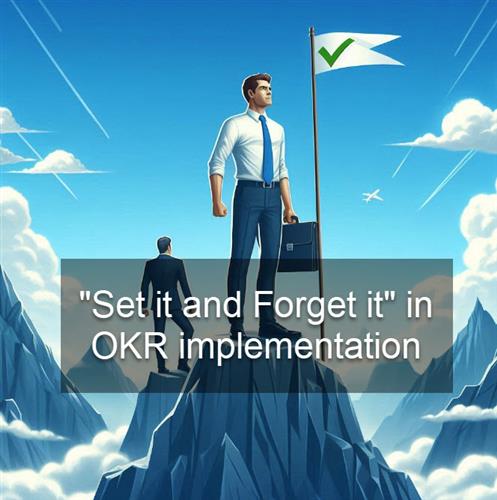






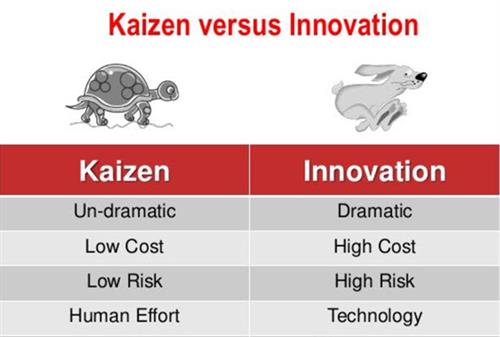






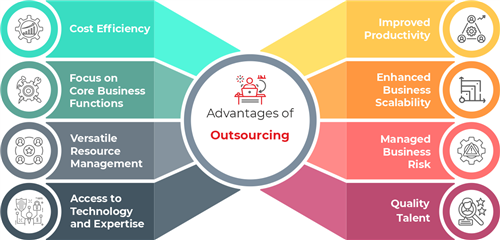


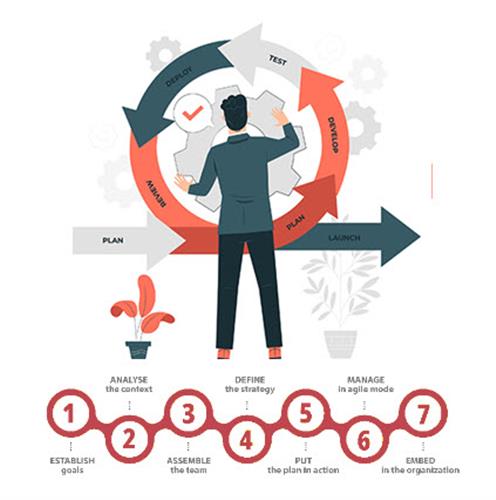
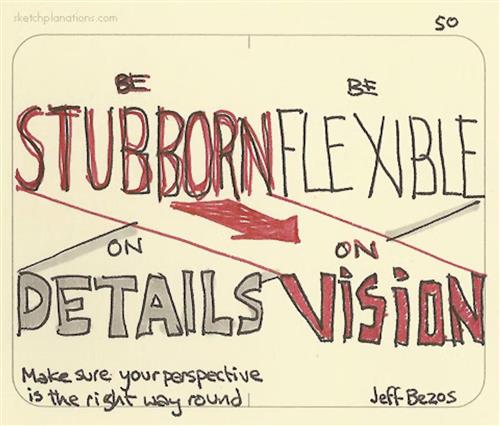









 Link copied!
Link copied!